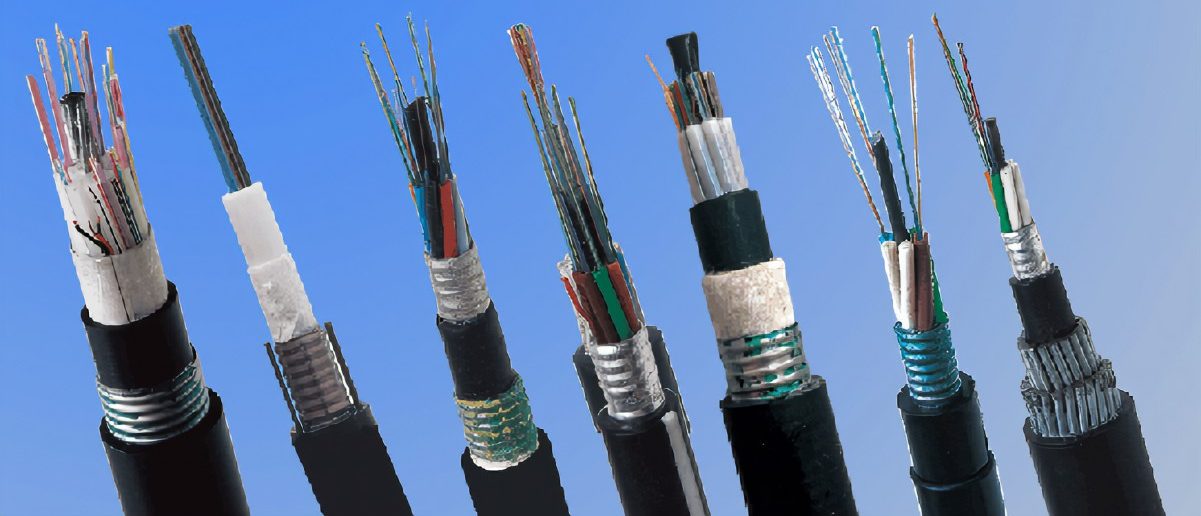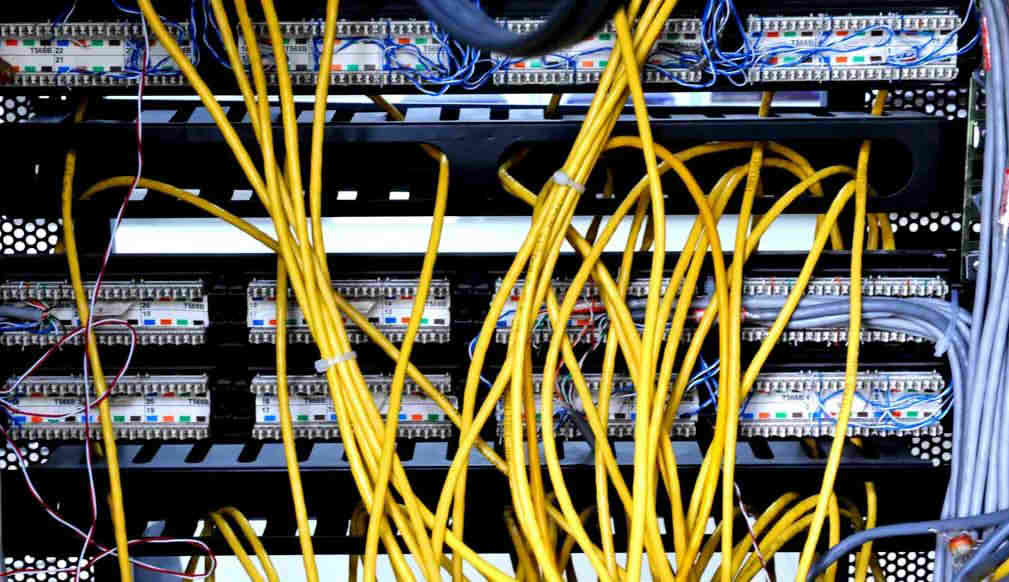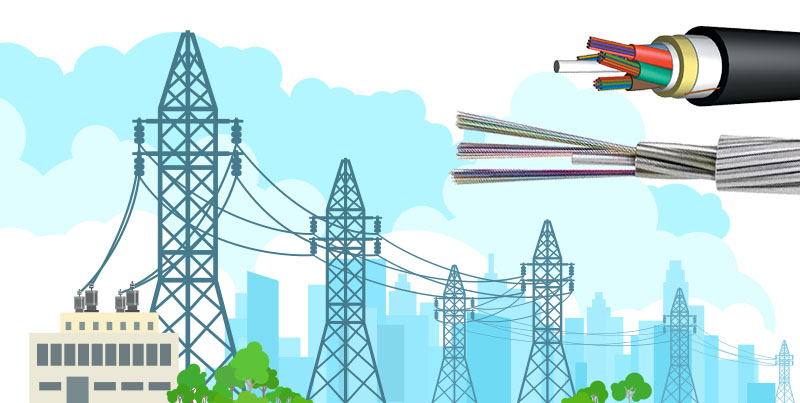Fiber optic cables have revolutionized the field of telecommunications and data transmission. These cables use light to transmit data, offering significant advantages over traditional copper wires, including higher bandwidth, faster speeds, and greater resistance to electromagnetic interference. This essay delves into the classification of fiber optic cables, explores their applications, and traces their development.

Classification of Fiber Optic Cables
Fiber optic cables are classified based on several criteria, including the type of fiber, the mode of transmission, and the cable construction.
1. Types of Fiber
Fiber optic power cables can be broadly categorized into two types: single-mode fiber (SMF) and multi-mode fiber (MMF).
Single-Mode Fiber (SMF):
- Core Diameter: Typically around 8-10 micrometers.
- Transmission Distance: Capable of long-distance transmission, often used in telecommunications and long-haul data networks.
- Light Source: Uses laser diodes.
- Bandwidth: Higher bandwidth capabilities due to minimal modal dispersion.
- Applications: Suitable for applications requiring high data rates over long distances, such as metropolitan and wide-area networks (WANs).
Multi-Mode Fiber (MMF):
- Core Diameter: Ranges from 50 to 62.5 micrometers.
- Transmission Distance: Limited to shorter distances, usually up to a few kilometers.
- Light Source: Uses light-emitting diodes (LEDs).
- Bandwidth: Lower bandwidth compared to SMF due to modal dispersion.
- Applications: Commonly used in local-area networks (LANs), data centers, and intra-building connections.
2. Modes of Transmission
Fiber optic cables can also be classified based on their mode of transmission:
Step-Index Fiber:
- Structure: The core has a uniform refractive index, with a sudden change at the cladding.
- Dispersion: Higher modal dispersion, making it less suitable for high-speed data transmission over long distances.
- Applications: Primarily used in applications where cost is a critical factor and transmission distance is short.
Graded-Index Fiber:
- Structure: The core’s refractive index gradually decreases from the center towards the cladding.
- Dispersion: Reduced modal dispersion compared to step-index fibers, allowing for higher data transmission rates.
- Applications: Widely used in multi-mode fiber applications, such as LANs and data centers.
3. Construction of the Cable
Optic fiber cables are constructed in various ways to suit different environmental conditions and installation requirements. The primary types include:
Tight-Buffered Cables:
- Structure: Each fiber is coated with a buffer layer for protection.
- Flexibility: Offers higher flexibility and ease of handling.
- Applications: Used in indoor applications, such as patch cords and desktop connections.
Loose-Tube Cables:
- Structure: Fibers are encased in a gel-filled or dry water-blocking tube.
- Protection: Protects against environmental factors like moisture.
- Applications: Suitable for outdoor applications, such as long-distance and direct burial installations.
Armored Cables:
- Structure: Includes an additional layer of armor for mechanical protection.
- Durability: Offers enhanced protection against physical damage.
- Applications: Used in environments where the cable is exposed to potential physical damage, such as in industrial settings and direct burial installations.

Applications of Fiber Optic Cables
Fiber optic cables have a wide range of applications across various industries due to their high data transmission capabilities and reliability.
1. Telecommunications
Fiber optic cables are the backbone of modern telecommunications networks. They enable high-speed data transmission over long distances with minimal loss and interference.
Key applications include:
- Internet Backbone: Fiber optic electric cables form the core infrastructure of the global internet, facilitating high-speed data transfer between countries and continents.
- Broadband Services: Used in delivering high-speed internet services to homes and businesses.
- Voice and Video Communication: Supports high-quality voice and video communication services, including Voice over IP (VoIP) and video conferencing.
2. Data Centers
In data centers, fiber optic cables are essential for connecting servers, storage systems, and networking equipment. They offer the high bandwidth and low latency required for efficient data processing and transfer.
Key applications include:
- Storage Area Networks (SANs): Fiber optic cables connect storage devices to servers, enabling fast and reliable data access.
- Cloud Computing: Supports the high-speed connectivity needed for cloud services and data center interconnects.
3. Medical Industry
Fiber optic cables are used in various medical applications due to their small size, flexibility, and ability to transmit data without electromagnetic interference.
Key applications include:
- Endoscopy: Fiber optic cables are used in endoscopes to provide illumination and transmit images from inside the body.
- Medical Imaging: Used in imaging devices like MRI and CT scanners for data transmission.
4. Military and Aerospace
The military and aerospace sectors rely on fiber optic cables for secure and reliable communication and data transmission. Key applications include:
- Avionics: Fiber optic cables are used in aircraft for data communication and navigation systems.
- Military Communications: Provides secure and high-speed communication links for military operations.
5. Industrial Automation
In industrial automation, fiber optic wires are used to connect sensors, controllers, and other devices in automated systems. Key applications include:
- Factory Automation: Facilitates real-time communication between machines and control systems.
- Process Control: Used in monitoring and controlling industrial processes.
6. Broadcasting and Entertainment
The broadcasting and entertainment industry uses fiber optic cables for high-quality audio and video transmission. Key applications include:
- Television Broadcasting: Fiber optic cables transmit high-definition video signals for television broadcasts.
- Live Events: Used in broadcasting live events, such as sports and concerts, to provide high-quality audio and video feeds.

Development of Fiber Optic Cables
The development of fiber optic cables has been driven by the need for higher data transmission speeds, greater bandwidth, and more reliable communication systems.
1. Early Developments
The concept of using light for communication dates back to the 19th century, with Alexander Graham Bell’s invention of the photophone in 1880. However, it was not until the 1960s that practical fiber optic communication systems began to emerge.
1960s:
- Theoretical Foundations: Researchers like Charles Kao and George Hockham laid the theoretical foundations for fiber optic communication, demonstrating the potential of using glass fibers for data transmission.
- First Fiber Optic Cables: Early fiber optic cables had high levels of signal loss, making them unsuitable for long-distance communication.
2. Technological Advancements
Significant technological advancements in the 1970s and 1980s paved the way for the widespread adoption of fiber optic cables.
1970s:
- Low-Loss Fibers: Researchers at Corning Glass Works developed low-loss optical fibers, reducing signal loss to acceptable levels for practical use.
- Laser Technology: Advances in laser technology enabled the development of efficient light sources for fiber optic communication.
1980s:
- Fiber Optic Networks: The first commercial fiber optic networks were deployed, offering significant improvements in data transmission speeds and reliability over traditional copper cables.
- Standardization: Developing industry standards for fiber optic cables facilitated their widespread adoption.
3. Modern Developments
The 1990s and 2000s saw continued advancements in fiber optic technology, leading to the development of high-capacity networks and new applications.
1990s:
- Dense Wavelength Division Multiplexing (DWDM): DWDM technology allows multiple data channels to be transmitted simultaneously over a single fiber, significantly increasing bandwidth.
- Global Fiber Optic Networks: The deployment of global fiber optic networks, including undersea cables, enabled high-speed data communication between continents.
2000s and Beyond:
- Fiber to the Home (FTTH): The rollout of FTTH networks brought high-speed internet access directly to consumers’ homes.
- Advancements in Fiber Technology: Ongoing research and development have led to the creation of ultra-low-loss fibers, bend-insensitive fibers, and other innovations that enhance the performance and reliability of fiber optic cables.
Fiber optic wire and cables have transformed the landscape of telecommunications and data transmission, offering unparalleled speed, bandwidth, and reliability. Their classification based on fiber type, mode of transmission, and construction reflects their versatility and adaptability to various applications. Fiber optic cables are indispensable in our increasingly connected world, from telecommunications and data centers to medical, military, industrial, and entertainment sectors. The development of fiber optic technology, driven by continuous innovation, ensures that these cables will remain at the forefront of communication systems for years to come.
